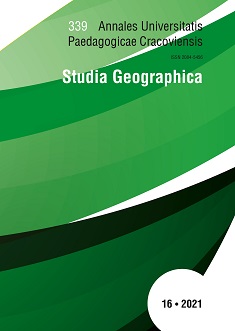Zmodernizowana przestrzeń architektury Szwajcarii
DOI:
https://doi.org/10.24917/20845456.16.13Abstrakt
Współczesna architektura Szwajcarii swoje początki zawdzięcza Le Corbusierowi, który był jej prekursorem. Modernizm, który został przez niego rozpoczęty charakteryzuje się estetyką puryzmu i wprowadzeniem w latach pięćdziesiątych brutalizmu. Próbował połączyć ludzką egzystencję ze społeczeństwem przemysłowym, budując Jednostkę Marsylską. Współczesna architektura to unowocześnienie architektury historycznej oraz postawienie człowieka w centrum miejskiej przestrzeni.
Oprócz Le Corbusiera modernistycznym architektem jest Peter Zumthor, Aldo Rossi, Mario Botta, Anette Gigon i Mike Guyer , Jacques Herzoga i Pierre de Meuron, Roger Diener czy Max Frish. Wielu szwajcarskich architektów przyczyniło się do stworzenia budowli, które miały służyć jako przestrzeń dla społeczeństwa, na przykład: muzea, uzdrowiska, budynki użytku publicznego. Używane materiały budowlane to beton, drewno i szkło, które umożliwiają stworzenie przemyślanej, oryginalnej i ponadczasowej architektury. Zdaniem wielu, architektura Szwajcarii została zaprojektowana idealnie pod jej kulturę i pejzaż. Należy przy tym pamiętać, że architekturę tworzą ludzie, posługując się swoją pomysłowością, wyobraźnią i wizją zagospodarowania danej przestrzeni. Przy projektowaniu każdemu twórcy powinna towarzyszyć oryginalność i kreatywność, która będzie określać ich styl projektowania, pozwoli im wyróżniać się na tle innych. Podczas tworzenia jednak powinien zachowany zostać pewien rytm, aby w efekcie końcowym nie powstał chaos czy też totalna abstrakcja. Projekty unowocześniają historyczną architekturę, nie zaburzając i nie zmieniając drastycznie jej charakteru. Wzniesione budowle wzbogacają i ożywiają szwajcarski skansen łagodnymi kontrastami i nowoczesnymi akcentami. Opisany kraj posiada przykłady każdego ważnego kierunku w europejskiej architekturze. Miasta i wsie zachowały wiele z ich osadniczej struktury. Jednymi z ciekawszych atrakcji architektonicznych są budynki mieszkalne, prezentujące oryginalne i regionalne cechy charakterystyczne dla Szwajcarii.
Bibliografia
Bigaj, P. ( 2009). Dekoracyjne użycie betonowych bloczków w manierystycznej architekturze
domów jednorodzinnych Mario Botty. Architektura - Czasopismo Techniczne 3-A, 4.
Binder, U., Geering, P. (2007). Freibad Letzigraben. Zürich: Wydawnictwo Neue Zürcher Zeitung, 97.
Gossel,P., Leuthauser, G. (2006). Architektura XX wieku. Koln: Taschen/TMC Art.
Jencks, Ch. (1982). Le Corbusier - tragizm współczesnej architektury. Warszawa: Wydawnictwa Artystyczne i Filmowe.
Lichtenstein, C. (2007). Die Architektur des Bades Letzigraben. Zürich: Wydawnictwo Neue
Zürcher Zeitung.
Markowski, A. (2005). Kultura języka polskiego. Teoria. Zagadnienia leksykalne. Warszawa: Wydawnictwo Naukowe PWN, 126-127.
Mońka, M. (2012). Le Corbusier - najbardziej wpływowy architekt w dziejach. https://www.designalive.pl/ikony-designu-le-corbusier-najbardziej-wplywowy-architekt-w -dziejach/.
Rossi, A., Portoghesi, P. (1982). Interview by Antonio de Bonis. Architectural Design, 52, 14.
Słownik terminologiczny sztuk pięknych (2003). Warszawa: Wydawnictwo Naukowe PWN, 19.
Tejszerska, A. (2015). Współczesna architektura sakralna na tle ponowoczesnych tendencji kulturowych. Lublin: Wydawnictwo KUL, 55.
Współczesna szwajcarska architektura, pozyskano z: https://www.myswitzerland.com/
pl/planowanie/o-szwajcarii/szwajcarska-sztuka-i-scena-kultury-wspoczesnaszwajcarska-architektura/
Wikipedia, wolna encyklopedia - Mario Botta, pozyskano z:https://pl.wikipedia.org/wiki/
Mario_Botta
Pobrania
Opublikowane
Numer
Dział
Licencja
Złożenie artykułu do druku oznacza wyrażenie zgody na bezpłatne (tj. bez honorariów autorskich) przeniesienie autorskich praw majątkowych na Wydawcę i zezwolenie na wydanie pracy w postaci drukowanej w dowolnej liczbie egzemplarzy oraz zamieszczenie jej w postaci otwartego dostępu na stronie internetowej czasopisma, w bibliotekach cyfrowych oraz innych cyfrowych platformach wydawniczych, z którymi Wydawca zawarł lub zawrze stosowne porozumienie o udostępnianiu. W przypadku artykułów wieloautorskich przyjmuje się, że autor zgłaszający pracę („correspondingauthor”) ma pełnomocnictwo do reprezentowania pozostałych współautorów w tym zakresie. Autorzy są proszeni o podpisanie stosownego oświadczenia w tej sprawie.

